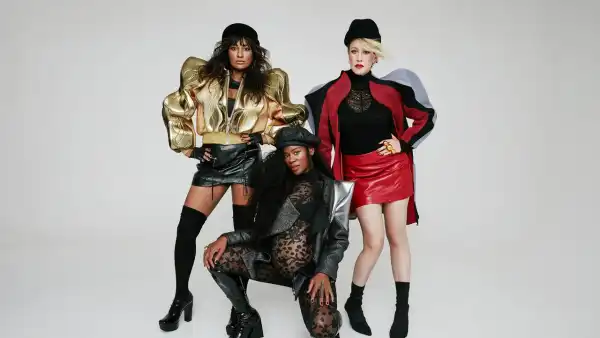
Save this storySave this storySave this storySave this story
“Weird.” It’s an eye-roll-inducing word, overused as it’s been these past two months. The term, which arguably won Governor Tim Walz the No. 2 spot on the Democratic ticket, was a stroke of folksy, linguistic genius: finally, a way to dismissively describe Donald Trump and his cohort without dipping into a self-righteous tone that could turn off wary swing voters. Trump bounded onto the national political stage nearly a decade ago by making race-baiting populism mainstream again. But this year there’s an extra layer of unhinged to his performance—in a recent nationally televised debate, for example, Trump said that Haitian immigrants in Ohio were eating household pets. When challenged by moderators about this online conspiracy theory, Trump defended himself by saying he’d heard about it on TV, which, indeed, was a weird thing to say.
The Lede
Reporting and commentary on what you need to know today.
Trump’s Vice-Presidential nominee, the Ohio senator J. D. Vance, added fuel to the racist conspiracy about his own Haitian constituents, by posting on X, “A child was murdered by a Haitian migrant who had no right to be here.” The child in question, an eleven-year-old named Aiden Clark, died after a Haitian immigrant, who was in the country legally on a Temporary Protected Status visa, crashed his car into Clark’s school bus. Clark’s death was no less tragic or senseless but certainly less premeditated than Vance’s remarks might let on (the driver was convicted of vehicular homicide in May). In the days following Trump’s remarks, members of the far-right fascist organization the Proud Boys were seen walking the streets of Springfield; local schools received more than thirty bomb threats, leading Ohio’s governor, Mike DeWine, to direct state troopers to guard the campuses. “Weird” proved to have real-world consequences that fell more into the category of “scary.”
The selection of Vance, a former Never Trumper who once called Trump a “moral disaster,” is emblematic of the increasingly off-kilter vibe wafting off of the Trump campaign. Vance has fashioned himself as an intellectual leader of the MAGA movement, a sort of conservative counterculture warrior. In 2021, he made derisive comments about “childless cat ladies” running the government on Tucker Carlson’s Fox News show. Around the same time, he suggested that people without children should somehow hold less voting power. Back then, Carlson’s program was one of the most watched shows on cable television, at the vanguard of bringing Internet extremism to the masses. Vance, who was then a Senate candidate, seemed to be conforming to Carlson’s mode of address, making himself more relatable to a right-wing audience. Vance said this year that those comments about childless people and voting were just a “thought experiment.” But he’s not the only person in Trump’s orbit to suggest that bearing children makes a person more virtuous. While introducing Trump at a rally last week, the governor of Arkansas, Sarah Huckabee Sanders, said that her kids kept her humble. “Unfortunately, Kamala Harris doesn’t have anything keeping her humble,” Huckabee Sanders said, mispronouncing Harris’s first name as “Ka-MA-la”—another messaging trope of Trumpworld—and failing to acknowledge that Harris has two stepchildren.
Vance is now a historically unpopular Vice-Presidential nominee. Mainstream Republican contenders, such as Senator Marco Rubio or Governor Doug Burgum, might have appealed to the sort of Nikki Haley voters that can’t stand Trump. Rubio, who is Cuban American, might have been a good pick to attract Latino voters, who, polls showed, were less interested in voting Democratic this year. Instead, Trump’s selection of Vance and all that he brings with him emphasized a doubling-down on MAGA culture. It could end up being politically ill-advised, but it’s not without its logic. Trump’s team knows that America is a hyperpartisan country. Polls show that just four per cent of voters are undecided in this election, the smallest share of the electorate in any U.S. contest this century. For the Trump campaign, the theory goes: Why expend all your energy trying to convince people to vote for one of the most unpopular Presidents in American history? Work to amp up your base and find Trump fans who don’t usually vote and make sure they turn out on November 5th.
The Trump campaign calls these voters “low-propensity,” and they’re working to turn them out in swing states like Arizona, where a canvassing effort is being run by the conservative group Turning Point USA. An Elon Musk-backed PAC is doing the same in Nevada and Michigan. Some Republicans have expressed reservations about the strategy, but it’s not a new idea in Trumpworld. In 2016, when I was a reporter at FiveThirtyEight, I obtained a Trump campaign memo written during that year’s primaries that explained the unusual practice of targeting low-propensity voters. “Our candidate commands unheard amounts of earned media,” the memo read, calling the strategy “more akin to evangelization than persuasion.” The job, then, was to teach Trump fans how to become Trump voters. “These are people who may not know where to vote, whether or not they are eligible to participate, and what the hours are,” the memo read. “They may have to work on the actual election day and are unaware of early voting opportunities on Saturdays. Many of them may have simply never been asked for their vote.” Turning Point’s focus this year—one of its employees told Semafor—is on small groups of thirty thousand to forty thousand potential voters in swing states, a testament to the slim margins of 2024.
Trump’s appeal has always been his sui-generis persona and politics—take him as he is—but, this year, the campaign seems more devoted to fan service than anything else. Steven Cheung, Trump’s top spokesman, recently retweeted a three-minute tongue-in-cheek hard-rock music video titled “MAGA ENERGY,” which nicely captured the movement’s aesthetics. It features lyrics like “Our world is frightening / Globals want to burn it down,” images of American flags and Trump’s face overlaid on that of a lion, and a montage of the jiggling, mostly bare bottoms of women shooting automatic weapons. Trump, a marketer to his core, has also built a promotional flywheel that he hopes his voters will get stuck in: If you like Trump’s crazy persona, you might go to your first Trump rally. If you go to enough rallies, you might like Trump’s digital trading cards—collect enough and you’ll get a physical piece of the suit that he wore to his debate with Biden (really!). If you like the trading cards, maybe you’ll buy Melania’s new book (she stands by her nude photos). Somewhere in there, Trump and company are hoping their low-propensity supporters register to vote and do so early.
Even if potential supporters don’t get sucked into the official Trump flywheel (he has a new hard cider you can try, too), the campaign is savvy at creating photo ops and what the historian Daniel Boorstin called “pseudo-events,” contrived moments that are covered by the media and promote the candidate’s message. In other words, spectacle that keeps him top of mind for those low-propensity voters he needs. Trump turned his Manhattan criminal trial into a campaign event with defiant press conferences. His Georgia mug shot was a merchandising gold mine. After the independent candidate Robert F. Kennedy, Jr., dropped out of the Presidential race in August, the Trump campaign held a red-carpet rally touting Kennedy’s endorsement of the former President, framing the pair as bipartisan visionaries. Last month, Trump went to Arlington National Cemetery with some of the families of the thirteen American service members who were killed in an attack at the Kabul airport during the Biden Administration’s 2021 withdrawal from Afghanistan—at the event, members of his campaign got in a “verbal and physical altercation” with cemetery staff over photography for the event. A little . . . weird.
The Republican National Convention, which began just days after an attempt on Trump’s life at a rally in Butler, Pennsylvania, was filled with outright religious fervor for the former President. He briefly dwelt in the metaphysical space of near-martyrdom, saying onstage that he wanted to “unite the country.” He has since pivoted back to his combative comfort zone, calling Harris “Comrade Kamala” and questioning whether or not she is Black. By the time the debate rolled around, Trump was ready to blame Harris for the assassination attempt. After a second attempt on Trump’s life was foiled, this time on his Florida golf course, Trump immediately castigated Democratic rhetoric. He has called Harris a “very dumb person,” a “radical left lunatic,” “crazy,” and reposted a crude sexual meme about her. Next week, he plans to return to Butler to hold a rally marking three months since he came “within a quarter of an inch of losing his life,” the Trump campaign said in a news release.
The risk for Trump, of course, is leaning too far into the bizarre political subculture that he’s created. Take, for example, Laura Loomer, a thirty-one-year-old right-wing influencer who has accompanied Trump to several events, including the debate against Harris and the 9/11 memorial ceremony in New York. Loomer’s appearance at Ground Zero was particularly surprising given that she has called the attacks an “inside job.” A day after the memorial, she wrote in a post that, if Harris wins, “the White House will smell like curry & White House speeches will be facilitated via a call center.” Even Representative Marjorie Taylor Greene—herself no stranger to hateful invective—called Loomer’s words “extremely racist.” The Republican senator Thom Tillis called Loomer “a crazy conspiracy theorist” and wrote that “a DNC plant couldn’t do a better job than she is doing to hurt President Trump’s chances of winning re-election.” Trump called Loomer a “supporter of mine” and a “free spirit.” But his campaign seemed to recognize the danger that she posed to its candidate. During an appearance on Meet the Press, Vance said, of Loomer, “I don’t like those comments,” and she has reportedly been banned from travelling with the former President.
But, even without Loomer’s help, Trump has proved how easily he can slip into parodically odd behavior. He remains active on social media, where he has retweeted an A.I. mockup of himself dancing next to Musk, in addition to a fake Taylor Swift endorsement. When the actual pop star came out with a real endorsement for Harris, Trump posted, “I HATE TAYLOR SWIFT.” Trump, who has been found liable for sexual abuse, said at a recent rally, “I always thought women liked me. I never thought I had a problem, but the fake news keeps saying women don’t like me. I don’t believe it.” He would be a “protector” of women, he said, at another appearance—they would “no longer be abandoned, lonely, or scared.”
Even if Trump’s fan’s like his antics, there are undecided voters who think it’s all in bad taste; a recent New York Times/Siena College poll of three swing states found that around a third of these voters were worried about Trump’s personality and behavior. It is almost as if Trump has painted himself into a corner of extremism; he has so long been a garish spectacle that it’s difficult to make him fit into the normal parameters of politics. His very existence thumbs its nose at any kind of modulated, moderate view. Weird might be a strategy, but there’s no guarantee it’s a winning one. ♦
Sourse: newyorker.com






